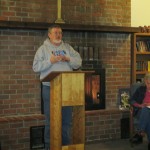
To write a story, you just plunge in and go, right? I favor this don’t-edit-while-you-draft method. But in revision, how you set-up your story is crucial to readers.
Writing Tip for Today: Let’s discuss the important elements
of story set-ups:
Timing is Everything
Set-ups differ from your story’s setting. The where and when
of your story are of course vital—one of my rules is that readers must always
know when and where they are. But set-up refers to how you help readers
understand much more.
You can think of your story’s set-up as Act One of your three-act structure. Your readers get to know who the protagonist is, how the Inciting Incident differs from that character’s ordinary world and what or whom the character may be up against.
A mistake I see often is waiting too long to introduce the character’s goal, need or desperate want. No matter the genre, by the end of Act One, readers must be willing to sign on for the journey ahead. If you write too much about ordinary time (before the Inciting Incident, after which nothing will ever be the same), you’ll have a hard time keeping readers hooked. Often, you’ll get feedback that your opening is slow.
One way to evaluate this timing is to look at your lead
chapter or prologue. How much background material are you giving? If your first
chapter or prologue is weighed down with back story, description and
explanations, chances are readers will flag before they get to chapter two. Many
drafts have been improved by simply either lopping off that slow first chapter
or parting it out to enhance Chapter Two—which becomes your story opening.
Tipping Points
Another problem I see in my coaching is an opening with too many things to remember at once. Character names, places and other names compete for your reader’s attention, especially before the reader understands who’s who and what’s what.
Resist the urge to spill every character’s name, every place
name, etc. in the opening pages of your story. Remember, you are your reader’s
manager—you write to direct attention to some details and away from others. We
do this by giving only the info readers need at any place in the story.
Some adhere to the rule that if the character or place doesn’t really matter to the story outcome, or, in the case of characters, if there is no spoken lines, that person or place remains unnamed. I’m not sure about that—sometimes names can really give a story flavor—but don’t ask readers to remember a long list, especially in the beginning of a story. Introduce characters slowly—maybe use the Rule of Three to give you a guideline. Be sure readers can get a solid idea of that name’s importance to the story before adding new ones.
Promises and Plants
Remember, all these tips are meant for revision, not first drafts. Another way to improve your story set-up is to go back and plant ideas, attitudes and emotions that will be uncovered later in the story. If your story’s first page hints at the entire story’s theme or promise, readers won’t get it until after they’ve finished reading. But readers also get much satisfaction from this kind of unity, even after the fact.
Most great stories didn’t start out with this unity. Most writers must go back in revision and refine and plant these hints of theme. Don’t be afraid to try out the concept. One excellent way to approach this idea is to give your protagonist an attitude or belief that will be reversed by story’s end. Find more on this idea in James Scott Bell’s excellent book, Write your Novel from the Middle.
By giving your protagonist the opposite stance in the beginning, you pave the way for character growth. This oppositional approach also gives your character the opportunity to experience a meaningful inner realization just before the climax scene. Planting info at your story’s set-up makes readers satisfied and they may think you’re a genius for tying everything together. Set-ups can make or break a story. What shape is your story set-up in today?





Great post! I will be sharing this widely.
Mark,
Wow, two in two weeks. I’m on a roll!
Thanks and Keep Writing,
Linda